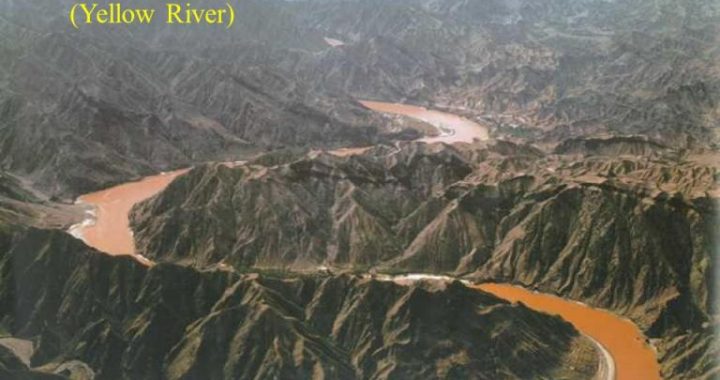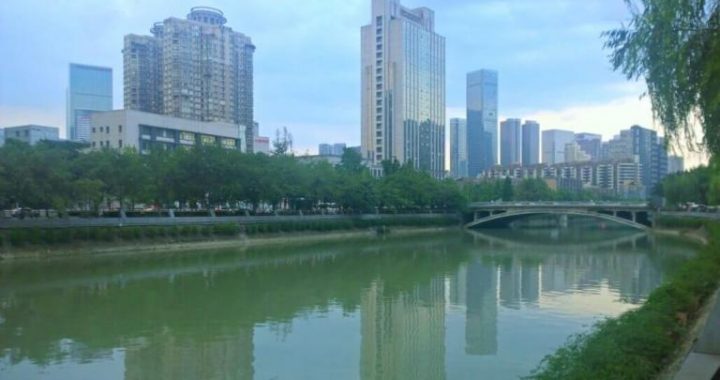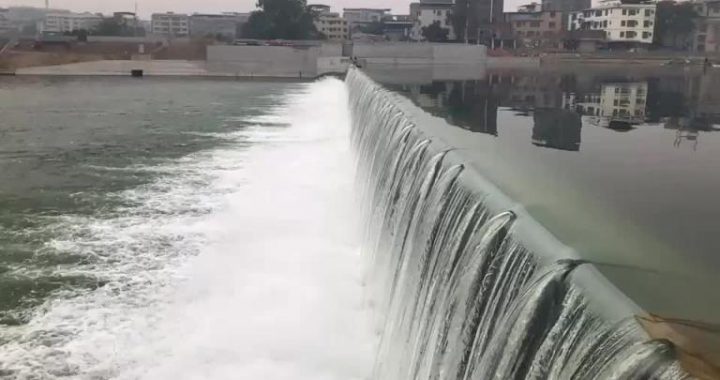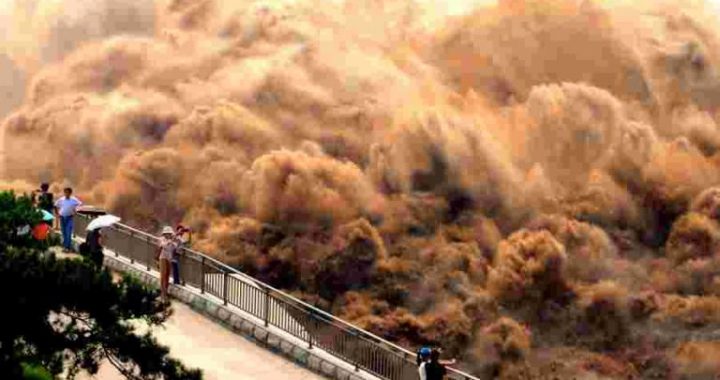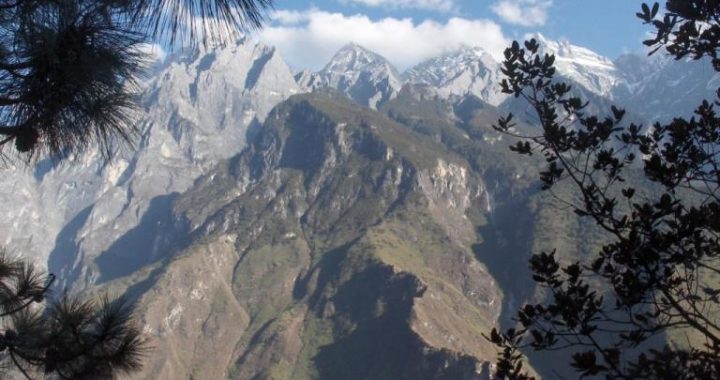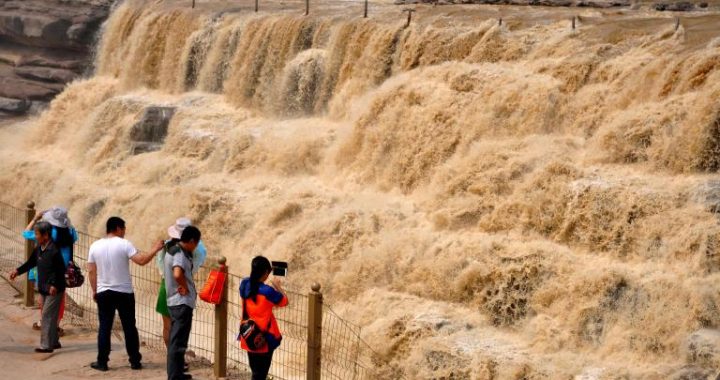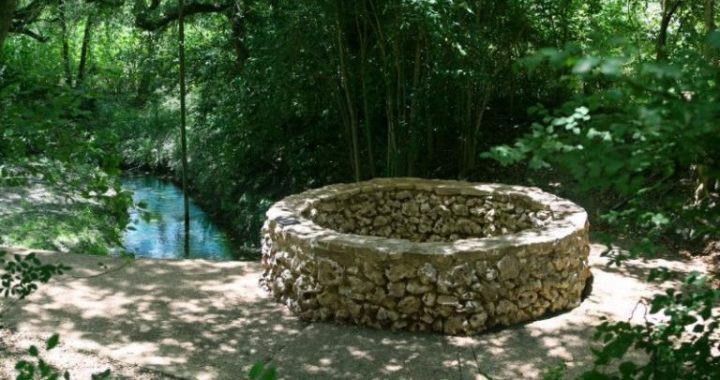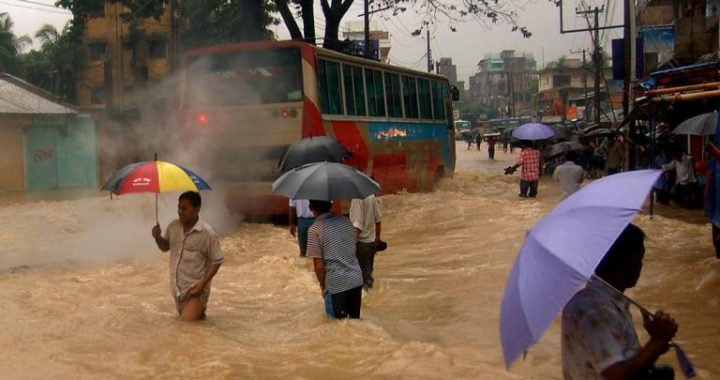The Frequent Change of the”River above Ground”
10 min readIn the whole course of the Yellow River, the lower reaches change its course most frequently and have different characteristics at different times. According tothe different times and characteristics, the course change of this section of river can be roughly divided into several periods.
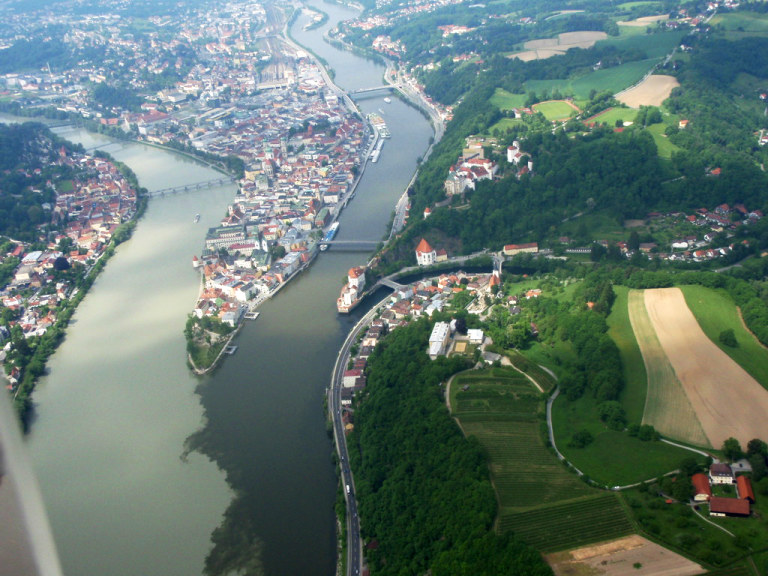
1) Early the Warring States Periods and Before
In the Neolithic Age of the primitive society, the lower reaches of the Yellow River flowed past Hebei Plain and emptied into the sea at the west coast of the Gulf of Bohai. Because the human being at that time were still in the barbaric state, they had little sense and ability to fight against the nature, so there were no dikes built along the river and the river course was very unstable.
According to the Chinese ancient literatures like Discusstion on the Tribute of Yu,A Chinese Bestiary: Classic of the Mountains-North and Han Works: Geography, the Yellow River used to change its course, eastward or westward, for many times, and the river courses that were formed by the course changes were also very complicated, among which three of them were the most famous. And among the three famous river courses, two of them were situated on Hebei Plain,a little to the west, and flowed northward along the foot of Taihang Mountain.
According to A Chinese Bestiary, the lower reaches of the Yellow River to the north roughly reached the south border of Yongding River’s alluvial area, and to the east passed Xiongxian County and Baxian County, and emptied into the sea near the urban area of Tianjin today; and in Discusstion on the Tribute of Yu, the lower reaches of the Yellow River was near the present-day Shenxian County, and it emptiedinto the sea at the east of Qingxian County after passing the central part of Hebei Plain; the Yellow River in Han Works was far from the east foot of Taihang Mountain and, after passing the northeast of Henan Province, the northwest of Shandong Province and the southeast of Hebei Province, it flowed to the northeast and emptied into the sea through Huanghua County. The three river courses were appeared before the middle of the Warring States Periods (475 BC-221 BC); sometimes the three courses coexisted and sometimes one of them was in a predominant position.
In ancient China,”He”(literally it means “river” now) was a noun referring to the Yellow River exclusively. According to the records in Han Zhi and Classics on Waters, there were over 10 watercourses called “He”on the Hebei Plain, which might be the old courses of the YellowRiver that were left after its previous course changes.
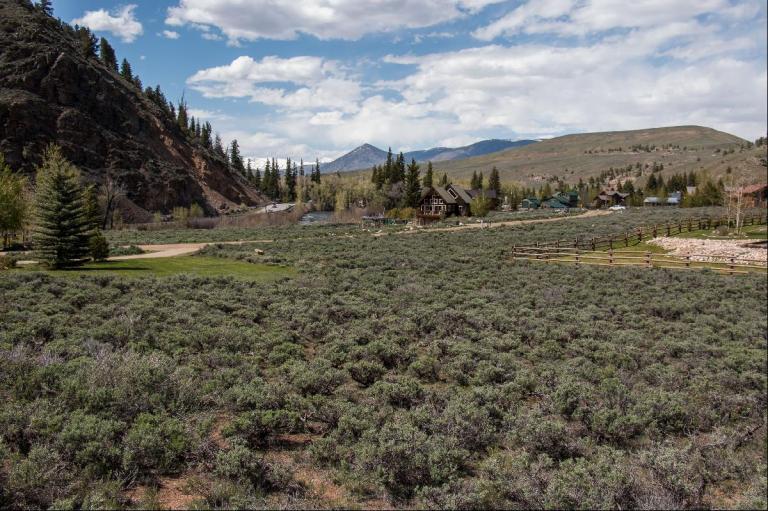
2) The Middle-Warring States Periods to the Late Western Han Dynasty
In the middle of the Warring States Periods (475 BC-221 BC), after people built levees in the lower reaches of the Yellow River on a large scale, the river coursewas fixed down, which was the Yellow River recorded in Han Works Geography, marking an end of the period of multiple diverted rivers and frequent course changes for the long time. This was the first river course of the YellowRiver in the true sense.
At that time, there was only a sparse population along the lower reaches of the Yellow River. When the levees were first built, the distance between the levees ofthe two sides reached 50 hanli (1 hanli=414 meters, therefore it was 20,700 meter away between the levees of the two banks). Water was confined in this river course which had a large capacity of flood storage, and the solid levees decreased the possibility of breach greatly, and people farmed on the large stretch of beach land which was formed by the silts deposit along the levees. In the late Western Han dynasty (206 BC-25 AD), because the soil erosion in the middle reaches of the Yellow River was worsening since the Qin dynasty (221 BC-206 BC) and the Han dynasty(206 BC-220AD), the riverbed of the course in the present-day Xunxian County in Henan Province already rose above the ground and the “river above ground”began to form.
3) The Esatern Han Dynasty to the Late Tang Dynasty
In 11 AD, the Yellow River was breached near Weijunyuan City (the present-day Daming City in Hebei Province). The water rushed the levee open on the east bank and overran till the counties east of Qinghe County. Although the Yellow River was breached and flowed eastward, the ruler then, Wang Mang, in order to ensure the safety of his own ancestral grave, which located at the west bank of the Yellow River, didn’t organize people to stop up the breach, but let the Yellow River change its courses and floods overrun, which caused the second important course change of the Yellow River, and the floods lasted for about 60 years.
After then, the river course of the lower reaches of the Yellow River remained in a comparatively stable state in about a thousand years. Although there were some breaches, no large-scale course changes of the river occurred. The reasons of this are mainly as follows:
Firstly, from the Eastern Han dynasty (25-220), large numbers of nomadic tribes who lived on herding moved to settle down along the middle reaches of the Yellow River. They changed planting, the original agricultural model of the middle reaches of the YellowRiver, into stockbreeding and ruined the farmlands to build grasslands.
The newly planted grass and boscage replaced the farmlands, which reduced the soil erosion because of their developed root system, therefore the amount of sand and mud entering the YellowRiver also decreased.
Secondly, in the late Western Han dynasty (206 BC-25 AD), the Yellow River flowed quite freely, without any fixed course. The government appointed Wang Jing to harness the river on a full scale. Through the method of human interference, they fixed a new course for the Yellow River. The new river course flowed across the border area of Hebei Province and Shandong Province. It started from Changshoujin (Xiwangbing in Puyang of Henan Province today) and entered the river course of the ancient Luoshui River. Then it diverted from the ancient Luoshui River at the place near the present-day Yanggu County, passing through the area between the Yellow River and Majia River of today, and emptied into the sea in Lijin County in Shandong Province.
Thirdly, at that time, there were many tributaries in the lower reaches of the Yellow River. Some of them entered the sea separately and some joined other rivers.
On its way there were also many lakes and swamps. These tributaries, lakes and swamps all contributed to flood diversion, sand discharge and flux ad justment.
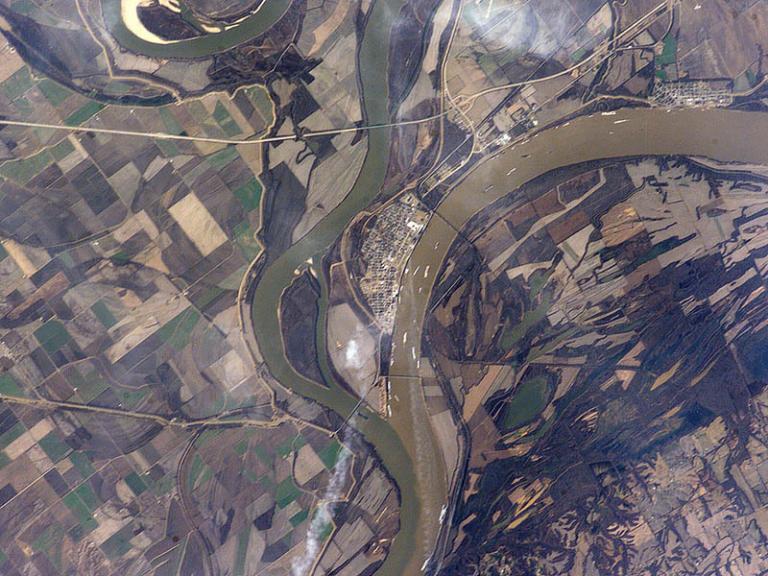
4) The Late Tang Dynasty to rhe Late Northern Song Dynasty
After thousands of years of silting, the river mouth section in the lower reaches of the Yellow River began to rise from the late Tang dynasty. In 893, the river mouth section changed its course for near 100. Till the Five Dynasties Period(907-960), the frequency of breach increased obviously, with an average of more than once in 3 years.
In the early 1lth century, the riverbed rose again in the area of Shanghe, Huimin and Bingzhou in Shandong Province of today, and the water level was much higher than the houses. Thereafter, the site of breach moved up wards to the area of Chanzhou(the present-day Puyang in Henan Province) and Huazhou(the old city in the east of the present-day Huaxian County). The tendency of course change in this period was moving northwards gradually. In 1048, the Yellow River was breached near Shanghusao(the present-day Dongchang Lake in Puyang) and flowed northward. It passed the area between the present-day Fuyang River and the South Canal, converged with Yuhe River(the present-day South Canal) and Jiehe River (the present-day Haihe River) in the lower reaches and then emptied into the sea in Tianjin. This course change of the YellowRiver was called “the Yellow River Running to the North”and is the third important course change of the YellowRiver in the history.
5) The Jin and Yuan Dynasties to the Jiajing and Wanli Reign of the Ming Dynasty
In this period the Yellow River underwent two large-scale course changes, one of which was caused by human activities.
In 1128(the 2nd year of the Jianyan reign in the Southern Song dynasty), in order to prevent the minority regime, Jin, in the north from invading, Du Chong, whowas appointed by the Song government to remain in the capital Dongjing, broke thedike of the Yellow River near the southwest of Huaxian County in Henan Province.
Breaking loose the bondage, the water, rushed out of the gap to the east, and entered Sihe River after flowing past the northeast of Henan Province and the southwest of Shandong Province, then entered Huaihe River after taking over the course of Sihe River. From then on, the Yellow River deserted its course since the Spring and Autumn and Warring States Periods (722 BC-221 BC) and didn’t flow through Hebei Plain any more. In over 700 years, that the Yellow River flowed from the southeast into Huaihe River was seen as a normal scene. This was the epoch-making event in the course change history of the lower reaches of the Yellow River, and also the fourth important course change.
In October 1286, the Yellow River was breached in 15 places successively, namely Yuanwu, Yangwu, Zhongmu, Yanjin, Kaifeng, Xiangfu, Qixian, Juzhou, Chenliu, Tongxu, Taikang, Weishi, Weichuan, Yanling and Fugou. The floods resulted from the breach could be roughly divided into two streams: one streamflowed to the south through Zhongmu, passing Weishi, Weichuan, Fugou, Yanlingm etc. and entered Huaihe River through the course of Yinhe River; the other stream flowed to the south through Kaifeng and, passing Tongxu, Taikang etc, entered Huaihe River through the course of Wohe River. This was the fifth large course change of the Yellow River in the history.
6) Mid-16th Century-1854
The state that the lower reaches of the Yellow River diverting into multiple streams was almost ended in the mid-16th century, and the division courses that flowed southward were all silted up and dried gradually. That the Yellow River took over the course of Sihe River and entered Huaihe River became the new characteristic of the river course development of the Yellow River in this period. Later, in the first year of the Wanli reign, the famous expert in harnessing the Yellow River in the Chinese history, Pan Jixun implemented the policy that “build levees to restrainwater and clean the silts with water torrents”, which took effect quite well and the river course of the lower reaches was also roughly fixed. Later, although some places of the Yellow River were still breached sometimes, they would return to the normal state soon.
The currents in the section from Xuzhou to Huaiying in Jiangsu Province were comparatively slow and this section became a busy traffic line, and also the security lifeline for many cities in this area, which was of a very importantposition and function. When Pan Jixun regulated the Yellow River, he made this section as the key area where a series of construction work was done, with many funds and materials. For example, rebuilding on a full scale the levees along theriver; rebuilding Gaojiayan Dam; raising the water level of Hongze Lake with man-made measures; building water reservoir to clean sand and silt in the Yellow Riverand so on, all contributed a lot to the safety of this section of river course and the improvement of tax system.
After 18th century, the section under Xuzhou was where the floods are most prone to occur, with the key area moving to the area from Huaiying to the river mouth. The reason was that after the Yuan dynasty (1206-1368) the Yellow River had long occupied the course of Huaihe River, and with large amount of silts that the Yellow River carried depositing near the river mouth, the delta area kept enlarging; the enlarging delta in return restricted the flowing of water and more and more silts filled up near the river mouth. After the 19th century, the river course under Xuzhou had become dilapidated because of the expanding area of silting and dike bursting occurred every year. In addition, the political situation was quite turbulent in China at that time; therefore the government didn’t care about the floods of the Yellow River at all, not to mention regulating the river.
7)1855-before 1950s
In June,1855, the Yellow River was breached near Tongwaxiang in Lanyang of Henan Province. The floods first submerged the villages in Fengqiu and Xiangfu Counties in the northwest, and then overran eastward to the place near Lanyi, Kaocheng and Changhuan Counties, where the floods diverted into three streams and flowed to the different directions. After a distance the three streams met again in Zhangqiu Town and, passing Zhangqiu Canal, they joined Daqing River by Buyan River, then emptied into the sea by Mulikou in Lijin. This was the sixth large course change of the Yellow River. And this dike-bursting ended the history of the Yellow River entering the sea through the course of Huaihe River for over 700 years and made it return to running into the sea near the Gulf of Bohai.
In the 20 years afterwards, the floods flowed freely and diverted on the delta alluvial fan which was with Tongwaxiang as the base point and reached Beijindi in the north, Caoxian County and Dangshan in the south, and the Grand Canal in the east, without any fixed river course. It was not until in 1876 the levees along the lower reaches of the Yellow River were finished that the course of the Yellow River in the lower reaches was fixed down and lasted till now without any large change.
The section from Tongwaxiang to Taochengbu in the lower reaches was breached frequently in the history and people called it “Tofu Waist”vividly, which means that this section of levees of the river was very fragile.
In June 1938, China was in the war against Japan’s invasion, while the Kuomintang government was not very active in defending. In order to prevent the Japanese troops from advancing to the west, the Kuomintang government ordered tobreach the levee of the Yellow River near Huayuankou of Zhengzhou City in Henan Province, resulting in the flooding of the Yellow River again. Although this action stopped the Japanese troops, the floods, which occurred suddenly and without any omen, claimed many people’s lives alongside the river. After the breaching, the Yellow River overran on the area among Jialu River, Yinhe River and Wohe River, causing the unprecedented calamity in the history. As the seventh large course change, this one made the Chinese people further understand the ruthlessness of the YellowRiver.
